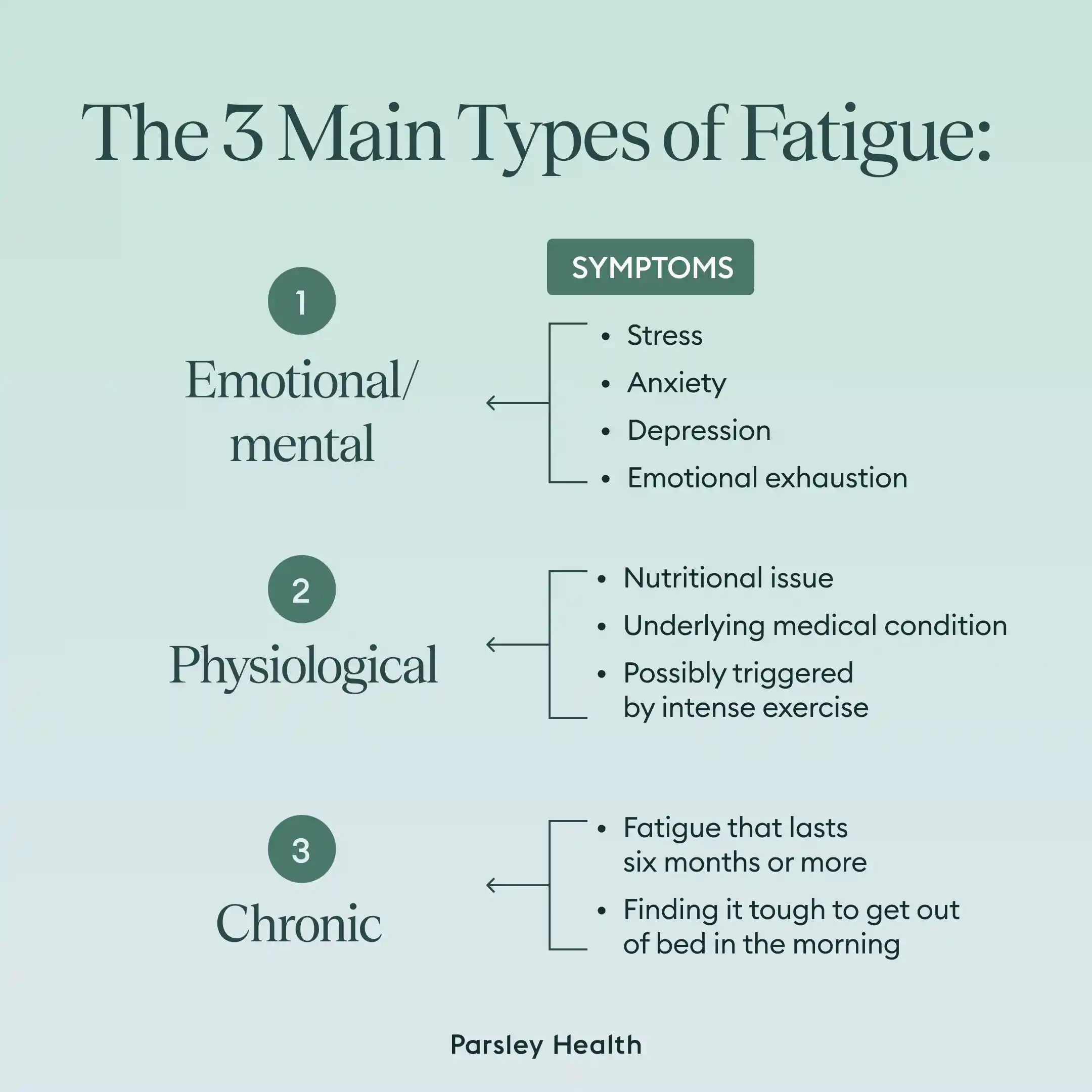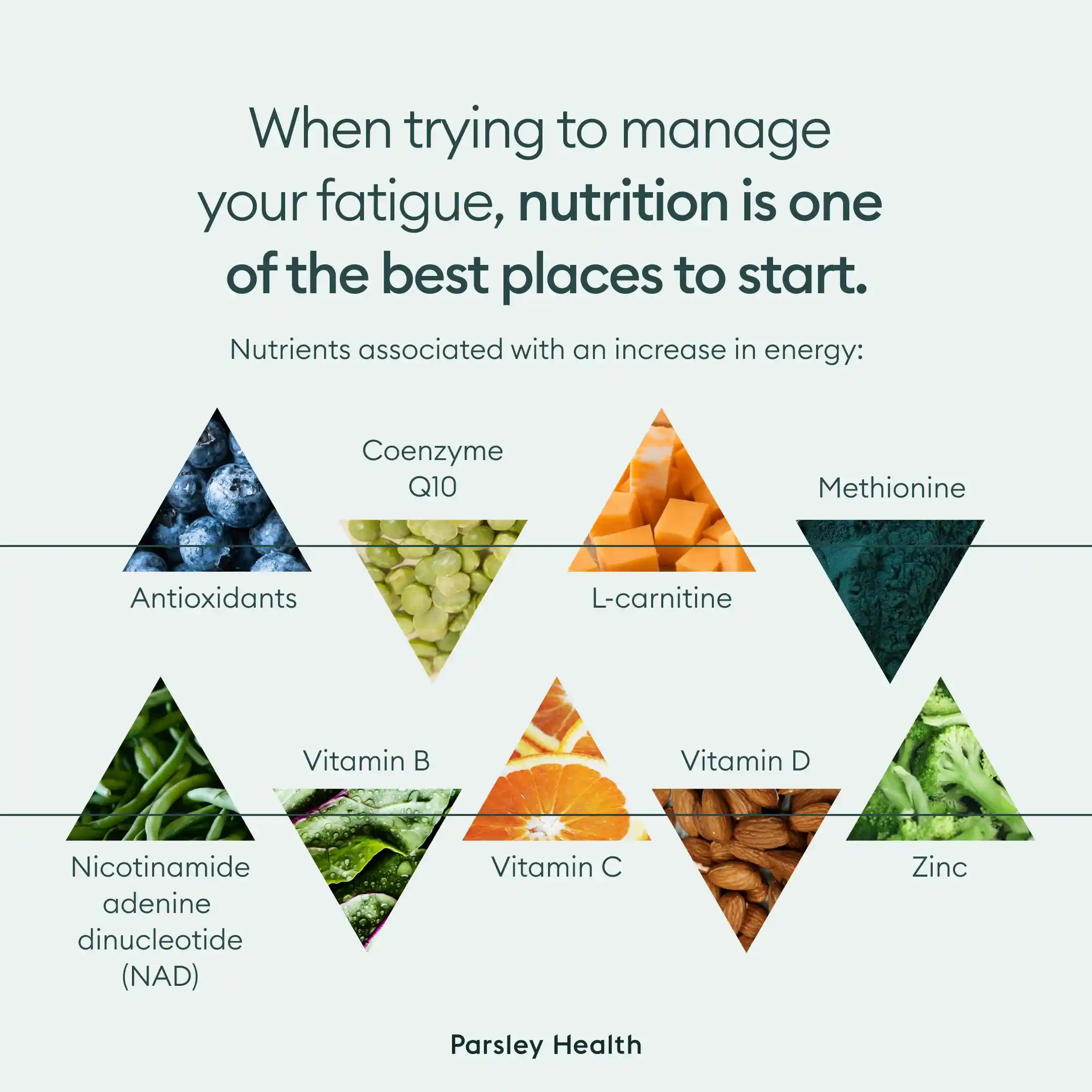Basic fatigue management strategies are simple but effective. They work whether fatigue is a standalone phenomenon or accompanied by other symptoms, like dizziness and cognitive problems. The most effective ones involve your diet, physical activity level, and lifestyle.
We all feel fatigued occasionally, which isn’t always bad. Fatigue, marked by a lack of energy, can be a sign that you just completed a hard workout, your body is fighting a cold, or you’ve had a few tough weeks at work. Other times, it’s a sign of a more persistent problem, such as an autoimmune condition or chronically high levels of stress.
No matter what is causing your fatigue or whether you experience it every once in a while or constantly, it’s good to have some tried-and-true basic fatigue management techniques in your back pocket, regardless of what’s causing your low energy levels. Of course, fatigue is different for everyone and these practices can be customized to your lifestyle.
Understanding fatigue
“Fatigue is a complex and multifaceted condition characterized by an overwhelming sense of tiredness, lack of energy, and reduced capacity to perform daily activities,” says primary care physician Resham Uttamchandani, MD. Dr. Uttamchandani adds that fatigue can manifest as mental, physical, and emotional symptoms, and often has a big impact on someone’s overall quality of life.
Fatigue, however, is different from feeling tired, which often disappears with adequate sleep. Dr. Uttamchandi explains, “Fatigue can persist even after adequate sleep and may be accompanied by other symptoms, such as cognitive dysfunction, mood disturbances, and decreased motivation.”
There are three main types of fatigue, all ofwhich have different root causes and symptoms to understand:

- Physiological fatigue: This can be due to a problem with your nutrition or an underlying medical condition that’s draining your energy (an autoimmune disorder, for example, or anemia). If your physiological fatigue turns out to be temporary, it could have even been triggered by intense exercise.
- Mental or emotional fatigue: This is fatigue that’s caused by stress, anxiety, depression, or emotional exhaustion. If you’re overworked or exhausted from a relationship that isn’t working out, for example, you may experience this type of fatigue.
- Chronic fatigue: This is a serious and long-term type of fatigue that lasts six months or more and can be difficult to treat. Those with chronic fatigue often find it tough to even get out of bed in the morning.
No matter what type of fatigue you’re experiencing, an underlying medical condition or something else in your lifestyle may be to blame. Fatigue is our body telling us it’s time to hit the brakes, make lifestyle changes, and/or seek medical attention.
Symptoms and signs of fatigue
Fatigue, as opposed to sleepiness, is a symptom of an underlying medical condition or something in your lifestyle that is draining your energy. Sometimes, it’s a normal response to intense physical activity or short-term boredom. Other times, it can last weeks or months, indicating that something more serious is at play.
In more severe cases, fatigue may be accompanied by:
- Memory or cognitive problems
- Joint or muscle pain
- Sore throat
- Digestive issues
- Allergies and food sensitivities
- Feeling dizzy, faint, or lightheaded when you stand up
- Difficulty sleeping
- No longer being able to do the activities you used to enjoy
Causes of Fatigue
“Fatigue often results from an interplay of various factors, including lifestyle choices, emotional well-being, and environmental influences,” says Dr. Uttamchandani. The most common factors include: short-term occurrences that drain our energy, lifestyle choices, or a medical condition. But don’t let that short list fool you: fatigue is very complex.
A one-time occurrence could be an over-scheduled week at work or a spate of over-exercising. These short-term triggers can lead to temporary fatigue and don’t usually require medical treatment, though fatigue management practices may help you recover better and faster.
Lifestyle choices, on the other hand, are repetitive triggers for fatigue. If that busy week at work turns into a busy quarter, that stress could be a lifestyle factor that influences your energy levels long-term. Similarly, not reserving time to move your body or consistently choosing processed foods over whole foods are two other lifestyle choices that may make you feel fatigued.
Medical conditions that can cause fatigue include, but are not limited to:
- Anemia
- Anxiety
- Autoimmune conditions
- Depression
- Diabetes
- Chronic obstructive pulmonary disease (COPD)
- Heart disease
- Infections
- Liver and kidney diseases
- Parkinson’s disease
- Thyroid conditions
- Sleep disorders, including sleep apnea and insomnia
- Stroke
Certain medical treatments, like chemotherapy or antidepressants, may also cause fatigue. When you’re recovering from a major surgery, you may experience fatigue as well.
To find the cause of fatigue, a functional medicine practitioners conduct thorough assessments to uncover the underlying factors contributing to fatigue. They will usually begin with a comprehensive assessment of your medical history, including past illnesses, infections, traumas, and environmental exposures. This assessment will also detail lifestyle factors that can influence fatigue, like diet, sleep patterns, stress levels, and physical activity.
Based on this assessment, they may order advanced laboratory testing. Common tests include:
- A complete blood count (CBC) to screen for anemia, infections, and nutritional deficiencies
- A comprehensive metabolic panel (CMP) to assess blood glucose, electrolytes, liver, and kidney function
- Thyroid panel to evaluate thyroid function
- Iron panel to diagnose iron deficiency and anemia
- Hemoglobin A1c (HbA1c) to monitor blood sugar levels
- Cortisol testing to evaluate stress response and adrenal function
- Micronutrient evaluation to identify vitamin and mineral deficiencies
- Food sensitivity testing to uncover potential dietary triggers
You most likely won’t have to go through all these tests as a functional medicine provider can point out the ones that are most useful to your specific situation.








